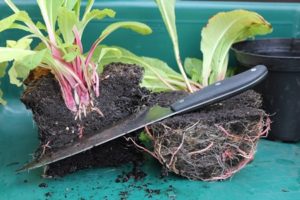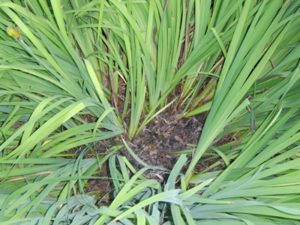Divide and Conquer Perennials
If some of your perennials are starting to overstep their bounds and invade the space of neighboring plants, then it’s time to put your foot down (on a garden spade) to divide and conquer! Your intervention will not only restore order and create more plants, it will also rejuvenate the perennial that has been divided. Spring is a terrific time to divide many perennials!

Most perennials can be divided by digging up the clump, laying it on its side and cutting through the root mass with a shovel, spade, knife or pruning saw. There is no rule of thumb as to the size of a division. It can be as small as a single stem attached to roots but the larger the section, the faster the plant will reestablish and go back into bloom. Some perennials like Astilbe and Phlox can develop extremely woody roots that may require a saw, small ax or Sawzall to penetrate. Many large ornamental grass clumps can be just as tough.

To minimize division and transplanting stress, I recommend taking the following precautions:
-Water the plant well the day before “surgery”
-Work during the cooler part of the day (morning or evening) or on a rainy or cloudy day
-For spring bloomers, shear off any spent flowers
-Water the division well after transplanting with a liquid organic fertilizer such as Neptune’s Harvest.
I hope you now feel empowered to roll up your sleeves and make divisions a part of your garden routine. The beautiful results will astound you.
